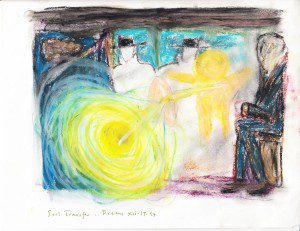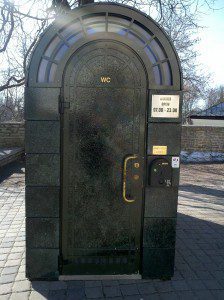 Ruby Modesto’s first personal experience of soul recovery came when she was ten years old. She went so far and so deep in a dream odyssey that she could not find her way back to her body. As she tells it, she went through no less than 13 levels of dreaming (compare that with the four in the movie “Inception”), falling asleep in one space, then waking in another, over and over again.
Ruby Modesto’s first personal experience of soul recovery came when she was ten years old. She went so far and so deep in a dream odyssey that she could not find her way back to her body. As she tells it, she went through no less than 13 levels of dreaming (compare that with the four in the movie “Inception”), falling asleep in one space, then waking in another, over and over again.
But she did not know how to come home. While her body slept, for days, in a semi-comatose state, the family tried everything to wake her. Nothing worked until Uncle Charlie, a Cahuilla pul, or shaman, went looking for her in the dream worlds, and found her errant soul and brought it home.
Amongst Ruby’s people, the Desert Cahuilla, soul recovery was (and hopefully still is) mainstream medicine. A Cahuilla shaman, or pul, might have several specialities, all connected with what he has personally experienced and survived. No surprise that for a dream shaman like Uncle Charlie the main calling is “healing soul loss.”
A dream shaman, familiar with the roads and gates of many different worlds, is best-qualified to track the astral footprint of a soul that has strayed far from the body. If he is true to his calling, he will follow the spoor until he has found what he is seeking. He must then court or cajole or trick the errant soul into coming into the palm of his hand, like a butterfly, and so hold it in a tender trap until he can put it back in the head or heart of the one who needs it returned.
Ruby Modesto describes how Uncle Charlie performed soul retrieval for a man with chronic fatigue and narcolepsy. He kept falling asleep, couldn’t work, couldn’t drive, couldn’t focus. No surprise that this type of sleeping sickness was quickly diagnosed as the result of soul loss. The man kept falling asleep because the wakeful, lively part of him was somewhere else, far from his body.
In this case, Charlie brought some help. In indigenous cultures, soul recovery is often a community affair. You want friends and family and other practitioners who know what they are doing with you in this. So Uncle Charlie and his apprentices are singing and dancing, while the sick man stares into the fire. Then the patient nods off – and the shamans see some part of is soul flying out the door. Charlie runs after it. He pursues it to the cemetery, where he sees it trying to burrow down into the earth among the graves of deceased family members. It wants to get down into a grave with someone the sick man had loved. Maybe it’s grief that is doing this, or maybe (as Charlie thought) it;s disgust with the way the sick man has been living his life. Whatever the cause, the shaman’s job is to get results. Charlie stamps on the gravesite, baring access to the Underworld to the spirit that wants to leave. Then he catches it in his hands like a winged insect. Back with the circle in front of the fire, he holds out his hand.
There it was: a tiny little man. It was naked and standing on the palm of Uncle Charlie’s hand. He blew tobacco smoke on the soul and put it back through the fontanel. Then he brushed the man’s head with eagle feathers. After that, the man was OK. He woke up and stopped having so much trouble in his life.
Once we restore the practice of soul recovery in our society, we, too, might wake up and stop having “so much trouble” in our lives.
Quotes from Ruby Modesto and Guy Mount, Not for Innocent Ears: Spiritual Traditions of a Desert Cahuilla Medicine Woman. Arcata, CA: Sweetlight Books, 1980. This is my third article on this remarkable Cahuilla shaman and what we can learn from her today.
“Soul Transfer” by RM. Oil crayons, 1994.

